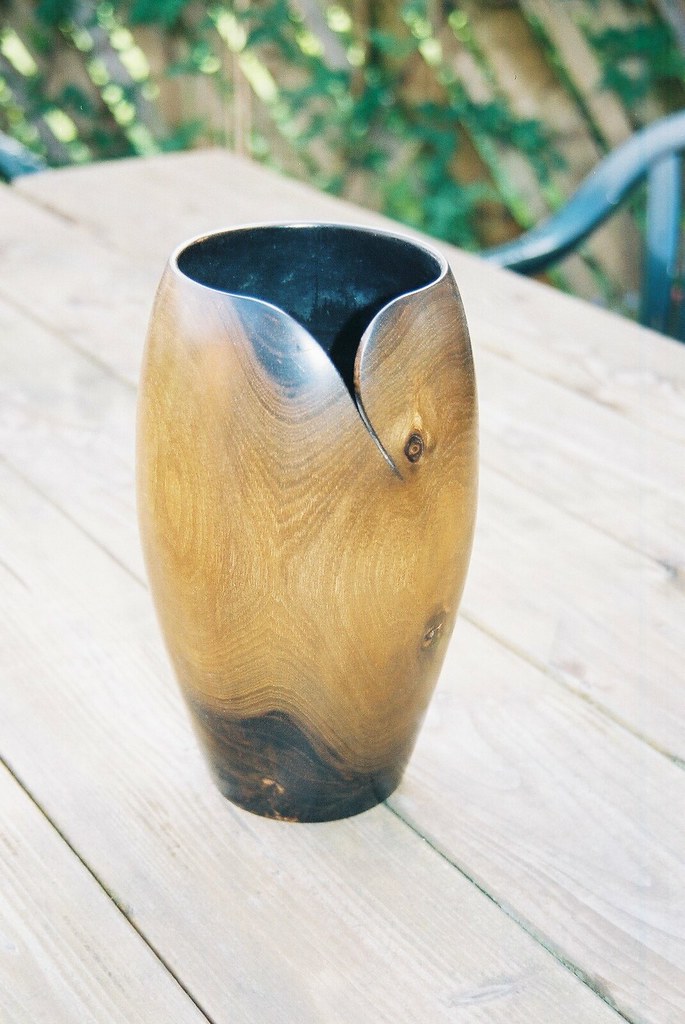Wow - thanks Guys, what a lot of interesting comments, worth putting the piece up for crit.
Responding generally -
Yes, the black inside could do with another coat. The ebonizing wash was all over the outside, but 'takes' on the heartwood much better - more tannin I guess. LOML prefers without the ebonizing, but I really think it brings out the grain pattern more. Must try it on some oak burl sometime to see what happens.
Two reasons for the interior being black - when turning it, I just couldn't get the inside walls as smooth as the outside, and the black disguises it somewhat. Also, I think it sets off the outside better.
Looking at it now, yes, maybe it could do with being slightly narrower in the base, although I'm happy with it as is. The tip about a slight step underneath is good - I'll try that in future. Also, it never occurred to me about the grain pattern and cutting the inlet that way. For some reason it felt right to do it the way I have, but for the reasons given, following the grain would have made a better piece.
I prefer a silk type of finish to my pieces, although I do shiny and matt also at times. High gloss probably never.
This is a very useful exercise - I am certainly learning things from it and I'm sure others are also. I look forward to more examples being posted.






